|
|
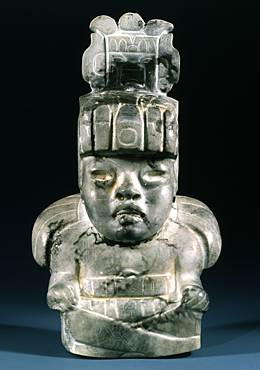
|
Divinely sanctioned authority derived from the intimate relationship between maize agriculture and the rituals performed to ensure its abundance. The earliest kings were portrayed wearing the regalia of the Maize God, embodying sacred power that guaranteed abundant crops. This richly dressed figure of an Olmec lord is one of the earliest such portrayals. Above his headband he wears the cleft mask of the Olmec Maize God.
Seated Lord Wearing Headdress and Cape |
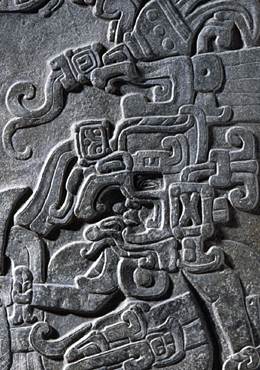
|
Stela 11 from the site of Kaminaljuyu (seen here in detail) portrays one of the earliest Maya rulers dressed as a divine being. The king peers out through the square eyehole of a bird mask, while his mouth and nose are enclosed by the curving upper beak of the mask's supernatural avian. The king's branching headdress expresses his personification as the world tree that unites the layers of the heavens, earth and underworld.
Stela 11 (detail) |
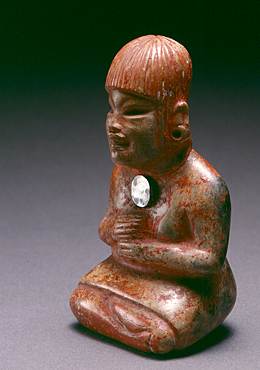
|
A rare depiction of a female in Olmec art, this seated figure is also unusual for her hematite mirror ornament. Her seated pose and mirror, an emblem of political and religious authority, convey her elite status. Mirrors functioned as divination tools, providing symbolic access to other realms.
Seated Female Figure with Mirror Ornament. |
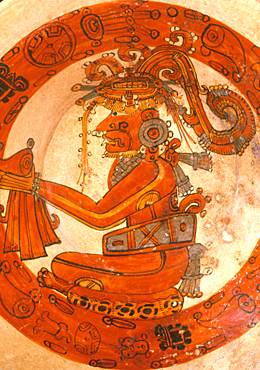
|
This king is dressed as the Maize God. He is seated cross-legged, in a rulership pose that goes back to the Olmec, and the foliated sign around his mouth may designate him as a lord or ruler. He holds an open bundle in his hands.
Plate Portraying Enthroned King. |
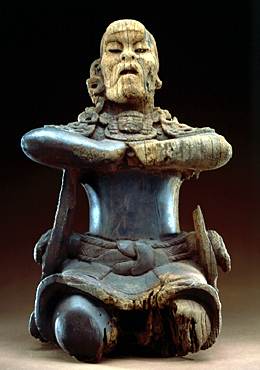
|
This extremely rare wooden figure may once have held a square mirror, and the figure's pose suggests a trance state associated with divination. Wood rarely survives in the tropical climate in which the Olmec and Maya civilizations flourished.
Kneeling Figure |
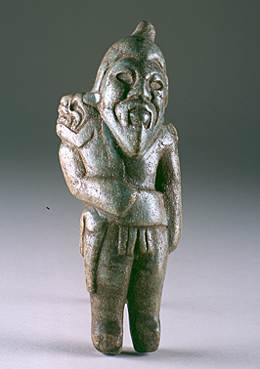
|
This figure, protectively holding a jaguar cub in his right arm, was once worn as a pendant. Jaguars were highly significant to the Olmec, and many figures combine human and jaguarian features.
Figure Holding Jaguar Club |
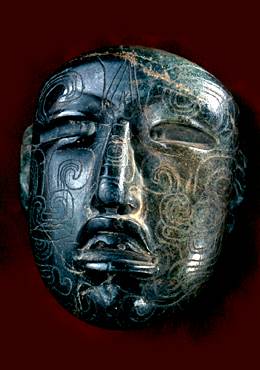
|
This incised maskette reveals an Olmec-style face covered with scrolled patterns on the cheek and a maize icon in the center of the forehead. Maize was a potent symbol of wealth for the Olmec.
Celt with Incised Profile. |
top home |
Copyright 2005 Los Angeles County Museum of Art